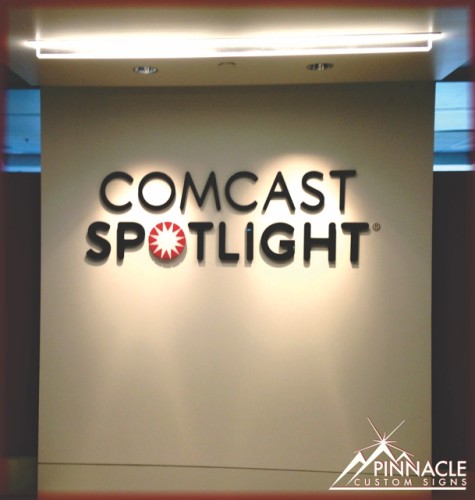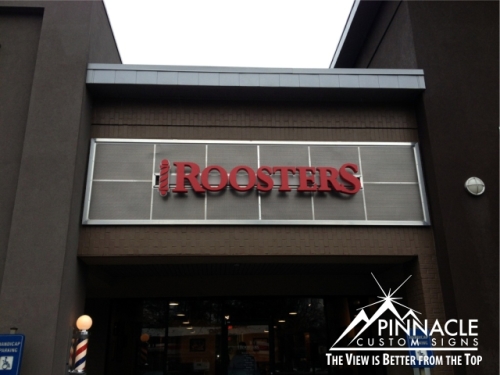Everyone knows that an attention-grabbing sign is what every business needs, and this is most often accomplished with the design. However, there are many other factors that also need to be taken into consideration when doing sign design. One crucial component that should be factored into designing a new sign is the installation environment.

There are several factors for both indoor and outdoor signs that need to be taken into account when designing a sign such as durability, lighting, regulations, weather, etc. Additionally, the context of the building or wall can present challenges because the sign must be built in a way to conform to whatever surface it is being attached. This article will look at how installation influences sign design.
Indoor Sign Installation Challenges
In regard to indoor signage such as lobby signs in office spaces and other interior signs such as room identifiers, you have to work around the textures and colors of the walls, as well as the lighting. Will the color of the wall enhance or detract from the intended sign? Are there spotlights that will shine on the new sign? If so, will they create too much glare or really make the sign stand out? Sign designers have to get creative if there isn’t a wall space suitable enough for a sign right when you walk into the office or behind the receptionist desk.
In addition to these factors, the method of installation is equally important. Will the sign be flush-mounted to the wall? Or, are you looking for a three-dimensional look? Will you be using stand-offs to provide the dimensional effect, or will it be accomplished by the material itself?
Finally, the design must account for the right installation tools & materials. Here, the designer has to plan for the proper adhesive, the proper number of standoffs, or the type of bolts and anchors that are appropriate for both the look that you’re trying to achieve as well as the location for the installation.
Outdoor Signage Installation Challenges
In dealing with outdoor signs, one of the first things that need to be considered in the design is the intended longevity of the sign. Additional factors such as sunlight, rain, heat, cold, humidity, etc. so that the sign does not deteriorate over time must also be taken into account.

For example, is it expected to be a long-term sign to mark your building such as a monument sign, subdivision sign or a lighted sign on the side of a building? Or, are you looking for something more temporary such as a commercial property sign announcing lease availability or a “coming soon” sign or banner? The answers to these questions will determine the materials used to install the new sign and what materials are best suited to the “shelf life” of the intended sign.
If the sign is needed for a long period of time, it may be necessary to choose materials that are more tolerant of the elements and cost a bit more, such as a high density urethane, or vinyl, rather than those that may be a bit more attractive, but be prone to deterioration such as wood. With today’s materials, and sign-making processes, it is sometimes possible to get a similar look with the higher quality material.
As you can see, in designing a sign, there can be several installation factors that can complicate the design, over and above just giving the sign an appealing look. Our sign professionals make sure to ask you many questions to make sure we understand what you are trying to accomplish with your new signs.






